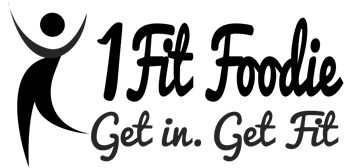Personal Training
How to Build a Fat Burning Salad
Salad. Lets face it. When we hear the word salad, we immediately think of ‘diet’ it’s not everyday that people go around saying “Man, I am seriously craving a salad!” its more like “Where is the pizza and french fries” Salad gets a bad reputation and more often than not is featured as a ‘diet’ food or appetizer to the actual meal. Salad does NOT have to be boring nor empty, and in fact is pretty much a blank canvas for you to build quite a nutritious, filling and delicious meal, not just an appetizer.
I love a good salad and usually have one everyday
So how do you create a salad that actually leaves you satisfied?
THE BASE: When it comes to picking your salad base, I would recommend the darker the greens the better! My go-to pick would be baby spinach and arugula. The darker the green, the more fiber, thus will keep you fuller longer! I personally am not such a fan of kale and have quite a hard time digesting it so usually don’t choose it as my base but kale would be highly recommended as well! I usually go with baby spinach or baby romaine. Chopped up is best because you can fit a whole lot of greens in your bowl and also makes it easier to chew and digest!
If the dark, leafy stuff isn’t your jam, you can stick with romaine or iceberg but just be sure to really pack it with the other goodies which i’ll go over below!
THE PROTEINS: Protein is important when we are talking about fat loss; dare I say it may be THE most important aspect of ones diet on a fat loss focused eating regimen. In relation to fitness, protein is viewed as a key nutrient in the development of strength and muscle gain. If you want to lose fat and get stronger, protein will be your best friend.
Generally speaking, animal protein such as chicken, beef, tuna or salmon provides all the essential amino acids in the right ratio for us to make full use of the, which is why when it comes to the proteins, I personally, 90% of the time choose an animal based protein to have on my salad.
General recommendations for protein intake if you are generally active and looking to maintain or gain lean muscle are 0.8-1.0g per lb of bodyweight……so if you are a 130lb woman, this would amount to 104-130g protein per day.
Now, in relation to salad recipes, don’t think that when you hear the word ‘salad’ that this means your bowl is just filled with vegetables! Protein is essential when building your fat burning salad.
I usually go with 3-4oz of lean protein which amounts to about 20-28g protein.
- FISH: Salmon, tuna, cod, haddock, scallops, shrimp, artic char, trout, mahi mahi, you name it!
- POULTRY: Chicken (breast, thighs, drumsticks) pork, turkey (breast, thighs, drumsticks)
- RED MEAT: Lean ground beef, lean steak, brisket, roast beef (watch sodium intake)
- EGGS: Whole, whites, hard boiled, over easy, egg salad–get creative!
FATS: One of my favorite food groups to experiment with, especially in salads! Using a healthy oil based dressing can completely change the flavor and nutritional profile of the meal. For instance, a sesame oil based dressing will give it an Asian, nutty, smoky flavor whereas an olive oil based salad dressing will give it a lighter, more versatile option depending on what vinegars and mustards are being used as well! Both pack a HUGE nutritional punch and the good fats in the oils will help the body to absorb all of the nutrients from the vegetables.
There should be enough healthy fats in the salad to satisfy, but not to overdo it such as throwing on half a bag of almonds or crushed pecans. Fats do contain the most calories per gram (9cal/gram) so just be sure that when you are adding fat, you are measuring or being mindful of how much you are adding.
To give you an idea of how I eat, I do not follow any sort of paleo or low carb/high fat diet. I like carbs, they work for me and I feel WAY better when eating them, so I don’t usually have more than 50/60g fat in a day (sometimes less than 50g) I keep my carbs moderate to higher because this is what works for me. When I choose my fat, I also take into account all of my meals that day so I be sure not to use more than about 10-15g fat. This is about 1TBSP oil or 16 nuts or 1/2TBSP oil with 1/4 avocado.
Next time you reach for the fat free or low fat salad dressing, put it down! You’re better off making your own. Our bodies NEED fat to absorb vitamins and the low fat/fat free dressings are packed with added crap anyway
When you have a range of vegetables of different flavours and textures in your salad, plus some denser, more filling ingredients, your salad goes from a side dish that leaves you starving to a meal that satisfies.


